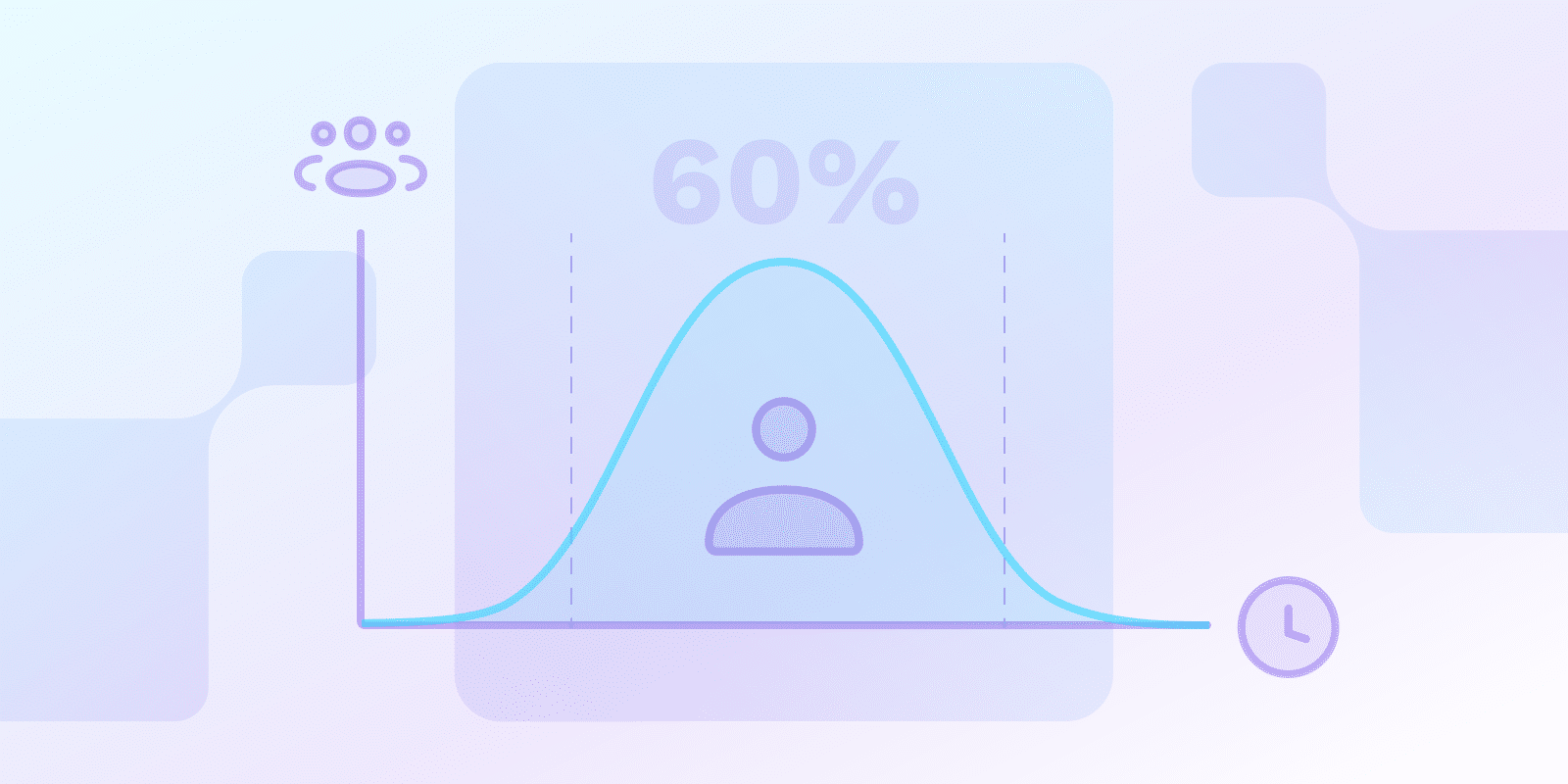SaaS Metrics and KPIs
What is Customer Lifetime Value (CLV)?
Published: October 9, 2024
Last updated: February 4, 2025

What is Customer Lifetime Value (CLV)?
Customer Lifetime Value (CLV) represents the total revenue a business can reasonably expect from a customer account for the entire length of the business relationship.
Understanding CLV helps businesses tailor their marketing efforts by identifying key customer segments and optimizing resource allocation for customer retention. This metric provides data that assists businesses with marketing activities by estimating the cost-effectiveness of campaigns and gauging customer acquisition and retention efforts. Metrics like CLV are powerful but should be used with additional ones to give the overall performance of the business.
How do you identify customer preferences to maximize the customer's lifetime value?
To effectively analyze product features and determine their compatibility with customer needs, you must first have a thorough understanding of those needs. AI-based product recommendations, personalization of product features, and targeted content are just some strategies to employ. It’s also important to implement upselling and cross-selling.
Offering customers products or services related to their previous purchases may increase their likelihood of making additional purchases. While it is possible that this will lead to improved customer satisfaction, it’s important to acknowledge that other factors could also play a role.
An online retailer could consider historical purchase data to explore possibilities for recommending related products to shoppers. Bundling items with discounts could potentially influence sales outcomes in various ways.
Use analytical tools and customer feedback to gather insights that inform the personalization of their experience.
How can CLV insights help determine the optimal investment for acquiring new customers?
Customer lifetime value (CLV) and acquisition costs are interconnected, indicating that effective spending management contributes to achieving positive revenue streams from all acquired customers.
The addition of Customer Acquisition Cost (CAC) into the equation of CLV offers a view of efficiency, effectiveness, marketing expenditure, resource management, and acquisition and retention of customers.
Analyzing customer lifetime value data can be instrumental in preparing budgets for purchases, generating precise revenue expectations, and establishing financial projections that steer investments toward customer segments exhibiting loyalty and high engagement.
How do you define the effect of your churn rate on your CLV?
The churn rate is a key indicator of your SaaS’s customer retention performance, reflecting the rate at which customers discontinue their subscriptions. It is a critical key metric to CLV because if the churn rate is low, then customers remain with the business for a long period, thus increasing their lifetime value.
Customer lifetime to churn can be expressed using the formula: Customer lifetime = 1/churn. This means that customers are likely to remain with the service provider for 100 months if the churn rate happens to be 1% per month.
The instability of the churn rate over time highlights the need to invest in customer loyalty to increase CLV.
In spite of that, the churn figure cannot by itself provide most of the answers. It is critical to understand the reason for customer churn and help improve the retention measures.
What are effective strategies and tactics for increasing customer lifetime value?
Any enhancement in the Customer Lifetime Value (CLV) is important to the company’s success. There may be a correlation between high CLV and customer behaviors such as repeat purchases, recommendations, and positive feedback. Focusing on strategies that align with customer needs and preferences can potentially influence their perception of value gained from their interactions with the company.
Examples of strategies include:
Customer Experience
- Customer success: Understand user requirements and develop tailored interactions to ensure these are met throughout their product usage. These may include anything from usage recommendations to dedicated support.
- Community building: It is possible to create a community for users, so they communicate with each other and share opinions and thoughts.
- Social presence: Make your service available through a variety of means like your website, social channels, or forums.
Product offer
- Pricing strategies: Experiments with different pricing strategies like usage-based pricing or tiered pricing or make use of pricing tactics, which include free trials or LTOs.
- Pricing page: Ensure pricing transparency through a balanced SaaS pricing page. Also, consider framing value correctly for your SaaS product.
Monitoring progress
- Track key SaaS metrics: Analyze relevant benchmarks like ARPU, Churn MRR, or CAC.
- A/B test your strategies: Run different strategies and include different customer segments.
| Strategy Category | Key Tactics | Potential Impact on CLV |
|---|---|---|
| Customer Experience | ||
| Customer Success | Tailored interactions, usage recommendations, dedicated support | Increased customer satisfaction, lower churn rate |
| Community Building | Create user forums, encourage communication between customers | Enhanced engagement, stronger brand loyalty |
| Social Presence | Multichannel availability (website, social media, forums) | Improved accessibility, customer trust |
| Product Offering | ||
| Pricing Strategies | Usage-based pricing, tiered pricing, free trials, limited-time offers | Flexible value proposition, attract diverse customer segments |
| Pricing Transparency | Clear pricing page, correct value framing | Increased customer confidence, reduced friction in purchasing |
| Monitoring & Optimization | ||
| Metric Tracking | Monitor ARPU, Churn MRR, Customer Acquisition Cost | Data-driven decision making, early identification of trends |
| Strategy Validation | A/B testing, segmented approach to strategy implementation | Continuous improvement, targeted customer retention |
Conclusion
Customer Lifetime Value (CLV) is a valuable metric that can help businesses understand their customer base and make informed decisions about marketing, resource allocation, and pricing strategies.
Analyzing CLV can assist businesses in tailoring their marketing efforts more effectively and allocating resources, thereby potentially leading to increased customer retention and long-term profitability.